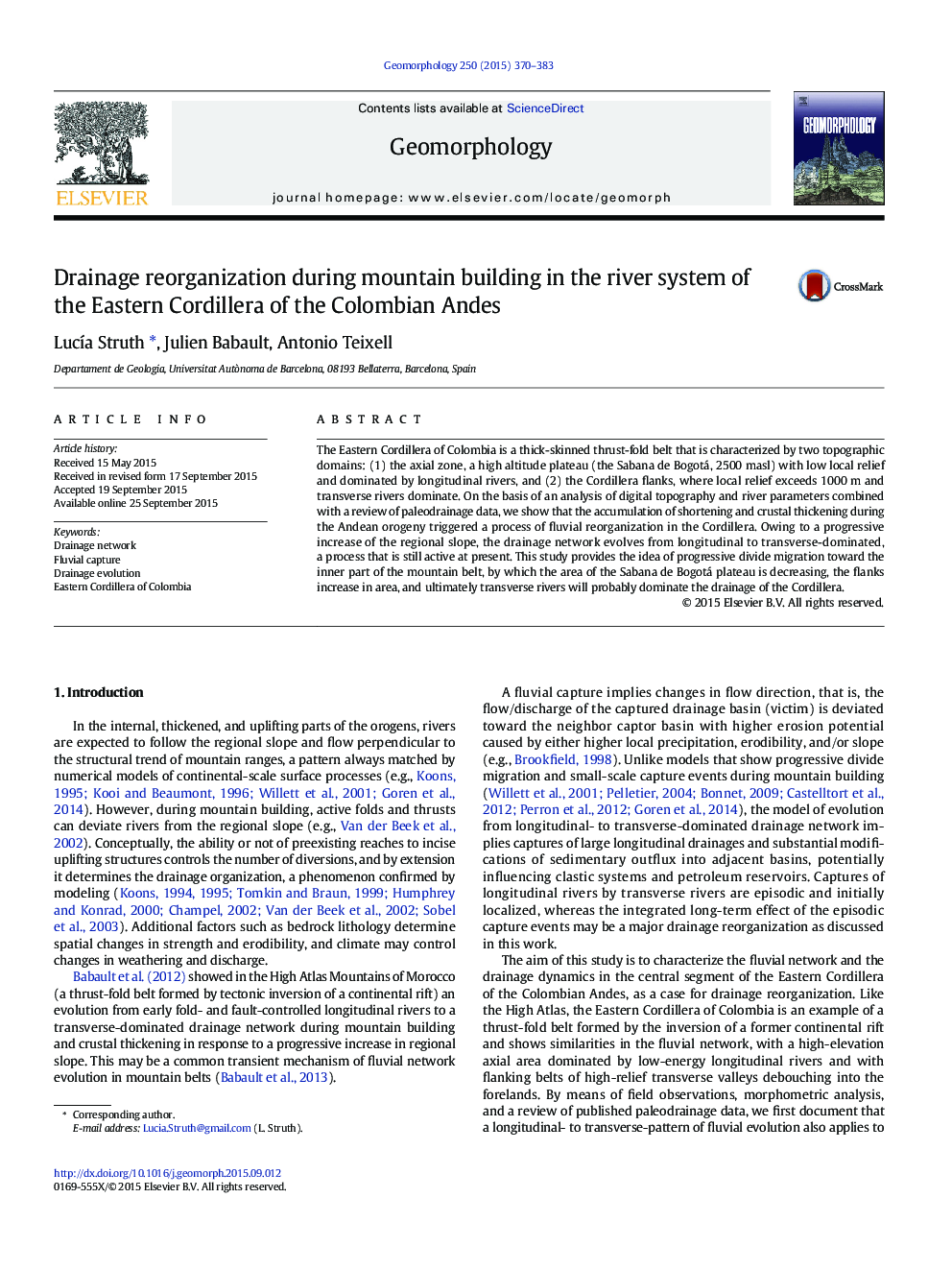| Article ID | Journal | Published Year | Pages | File Type |
|---|---|---|---|---|
| 6431821 | Geomorphology | 2015 | 14 Pages |
â¢The Eastern Cordillera presents a high contrast in regional slope between the plateau and the flanks.â¢The low-relief axial plateau is drained by longitudinal rivers and the high-relief Cordillera flanks by transverse drainage.â¢Ongoing process of drainage reorganization by capture of the longitudinal drainage by the transverse drainage system.â¢Fluvial reorganization interpreted as a result of regional slope increase during orogenic shortening and crustal thickening.â¢The longitudinal-to-transverse drainage evolution thus deduced may represent a transient stage in mountain building.
The Eastern Cordillera of Colombia is a thick-skinned thrust-fold belt that is characterized by two topographic domains: (1) the axial zone, a high altitude plateau (the Sabana de Bogotá, 2500Â masl) with low local relief and dominated by longitudinal rivers, and (2) the Cordillera flanks, where local relief exceeds 1000Â m and transverse rivers dominate. On the basis of an analysis of digital topography and river parameters combined with a review of paleodrainage data, we show that the accumulation of shortening and crustal thickening during the Andean orogeny triggered a process of fluvial reorganization in the Cordillera. Owing to a progressive increase of the regional slope, the drainage network evolves from longitudinal to transverse-dominated, a process that is still active at present. This study provides the idea of progressive divide migration toward the inner part of the mountain belt, by which the area of the Sabana de Bogotá plateau is decreasing, the flanks increase in area, and ultimately transverse rivers will probably dominate the drainage of the Cordillera.
